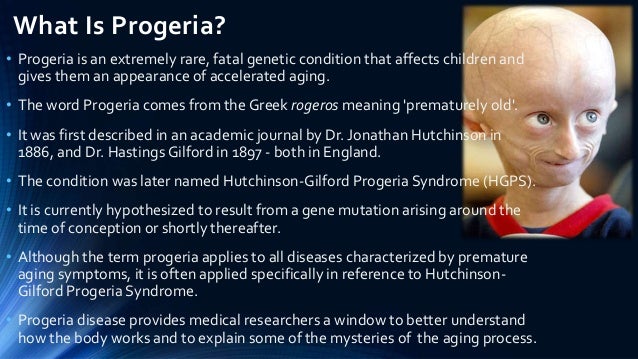Το σύνδρομο Hutchinson-Gilford ή, αλλιώς, προγηρία είναι μία σπάνια ασθένεια που κάνει τα παιδιά να φαίνονται υπέργηρα. Οι "Μπέντζαμιν Μπάτον" της αληθινής ζωής έχουν ελάχιστο χρόνο για να ζήσουν και να ευτυχήσουν, δεδομένου πως ο μέσος όρος θνησιμότητας των ασθενών της προγηρίας είναι τα 14 χρόνια. Η Παγκόσμια Ημέρα Σπάνιων Παθήσεων που εορτάζεται την τελευταία ημέρα του Φεβρουαρίου γίνεται αφορμή για την ενημέρωση και ευαισθητοποίηση του κόσμου ως προς τη φύση (μεταξύ άλλων και) της προγηρίας και τις επιπτώσεις της στη ζωή των ασθενών.









Δεν υπάρχουν σχόλια:
Δημοσίευση σχολίου